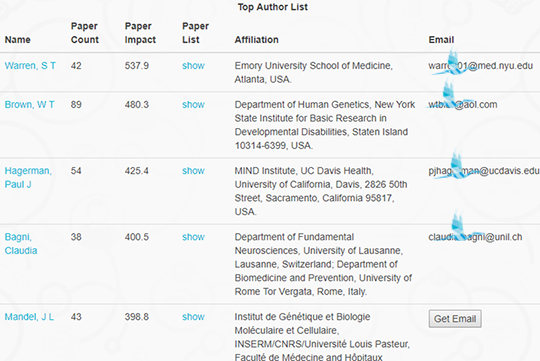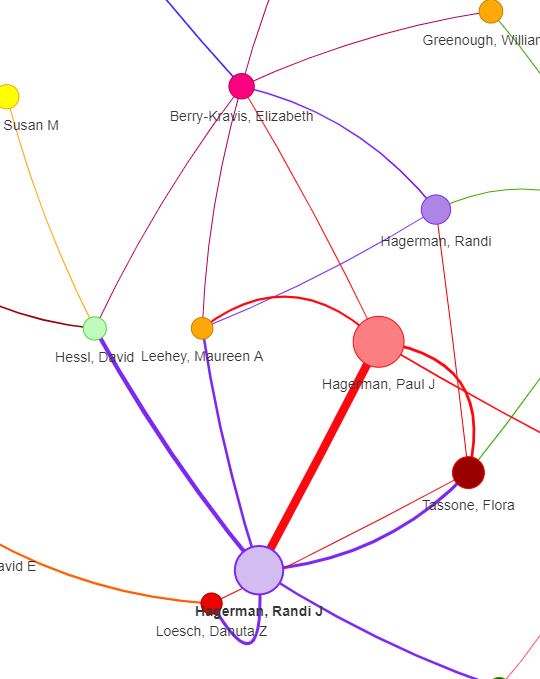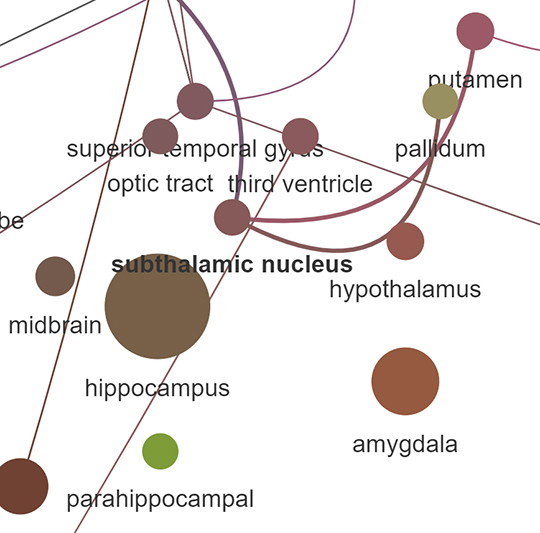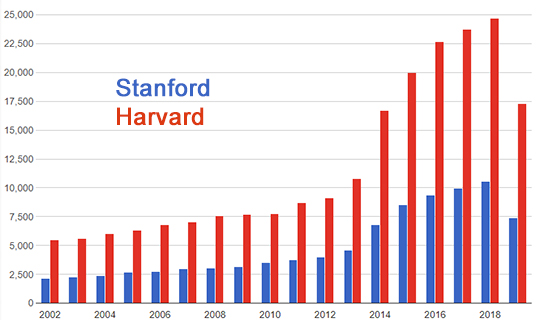
Big Analysis
"Big Analysis" allows a researcher to quickly understand all aspects of a field's progress in a matter of minutes, including growth trends, geographic distribution, experts (and their contact information), genes, diseases, brain regions, etc. Specifically, after entering a keyword, Stork will download and analyze a large number of scientific literature in real time, and show the following information with charts and tables:
- Growth trend (a graph of the number of publications over time)
- If the keyword is a comparison of two or more keywords, it will show the growth trend of both keywords side by side in the last 15 years.
- Growth rate
- Country map
- Country ranking
- Institute ranking
- Term frequency analysis (phrases with 1 to 4 words)
- Journal ranking
- Gene ranking
- Disease ranking
- Brain ranking
- Brain region network graph (interactive)
- Author relationship network diagram (interactive)
- Ranking of authors and list of their details (including affiliation and email)
Let's use keyword "Fragile X" as an example. Here is the screenshot:

Based on the analysis of 7,595 publications, it can be seen that the research on Fragile X grew faster in the 1990s, slowed down in 2000-2005, and then grew rapidly again around 2010, and peaked around 2015. Then the number dropped. The growth rate in recent years is about 5%. The number #1 country is the United States. The University of California and Emory University are among the top institutes. Fragile X is mainly associated with the FMR1 gene, and other related genes include FRAXE and others. The related diseases are mainly autism. High frequency words include mental, retardation, and so on. Fragile X's research is mainly published in journals such as Am J Med Genet and Hum Mol Genet. The brain regions associated with "Fragile X" include the hippocampus, white matter, and cerebellum.
Who are experts in the field of "Fragile X"? And what's their relationship?

Stork analyzes the number of authors' articles and their impact factors and ranks them by total impact factor. The emails and affiliation of these experts are also listed so the users may contact them for technical questions or collaboration.

The relationship between the authors is also visually displayed in the network graph. The graph is interactive and can be full screen.

Stork also analyzes the top brain regions and their "connections". Note that this "connection" refers to the tendency of two brain regions to appear in the same publication. Researchers familiar with human brain can see that the position of these brain regions is consistent with the real brain, with the forebrain on the right and the back on the left.
Sometimes we want to compare two (or more) keywords to see which one is "hotter". Stork can show you the comparison, as long as you enter the two (or more) keywords separated by " vs ". For example, if we want to compare Stanford vs Harvard, we can enter: stanford vs harvard. Stork shows you the growth of each keyword in the last 15 years in a minute or two.

Benefits
The example above shows that Stork's "Big Analysis" can help researchers, students, journal editors, etc.:
- quickly understand a research area
- write review articles
- find opportunities to collaborate experts in other fields
- find opportunities to study or research abroad
- consult experts on technical challenges
- find reviewers for manuscripts (if you are an editor)
- find presenters (if you are a meeting organizer)
- find out the ranking of institutes, or faculty in a department, in terms of publications
"Big Analysis is a fantastic tool for scientists in need of aggregating all aspects of research in their field. Personally, I’ve used Big Analysis to find papers to include in a systematic review for publication, to aggregate existing data for power analyses, and to finding the name and contact information for other researchers in my field. Together with Stork, Big Analysis is an indispensable tool for all research scientists."
Joseph Baker
Psychiatry and Behavioral Sciences, Stanford University
If you intend to use Stork's "Big Analysis" for commercial use (e.g. using it for marketing materials), please contact us for a license.
How to use?
Please go to Stork main page (account required), scroll down to the Advanced Feature section, check the "Add to subscription" box and then click "Subscribe" Button. You may also purchase Stork Membership.
Your payment is processed securely via Stripe.
Other advanced features
- AI Paper
- Writing Assistant
- ChatPaper
- True Cite
- Stork Pro
- Email Translate
- NIH Grant Database: Search, Translate & Alert
- PubMed Multi-Language Search, Translate & Alert
- Big Analysis
- Citation Network
- Preprint Alert
- Sentence Sea
- Listen to papers
- Journal Finder
- Reading Guide
Stork Official Website: https://www.storkapp.me
